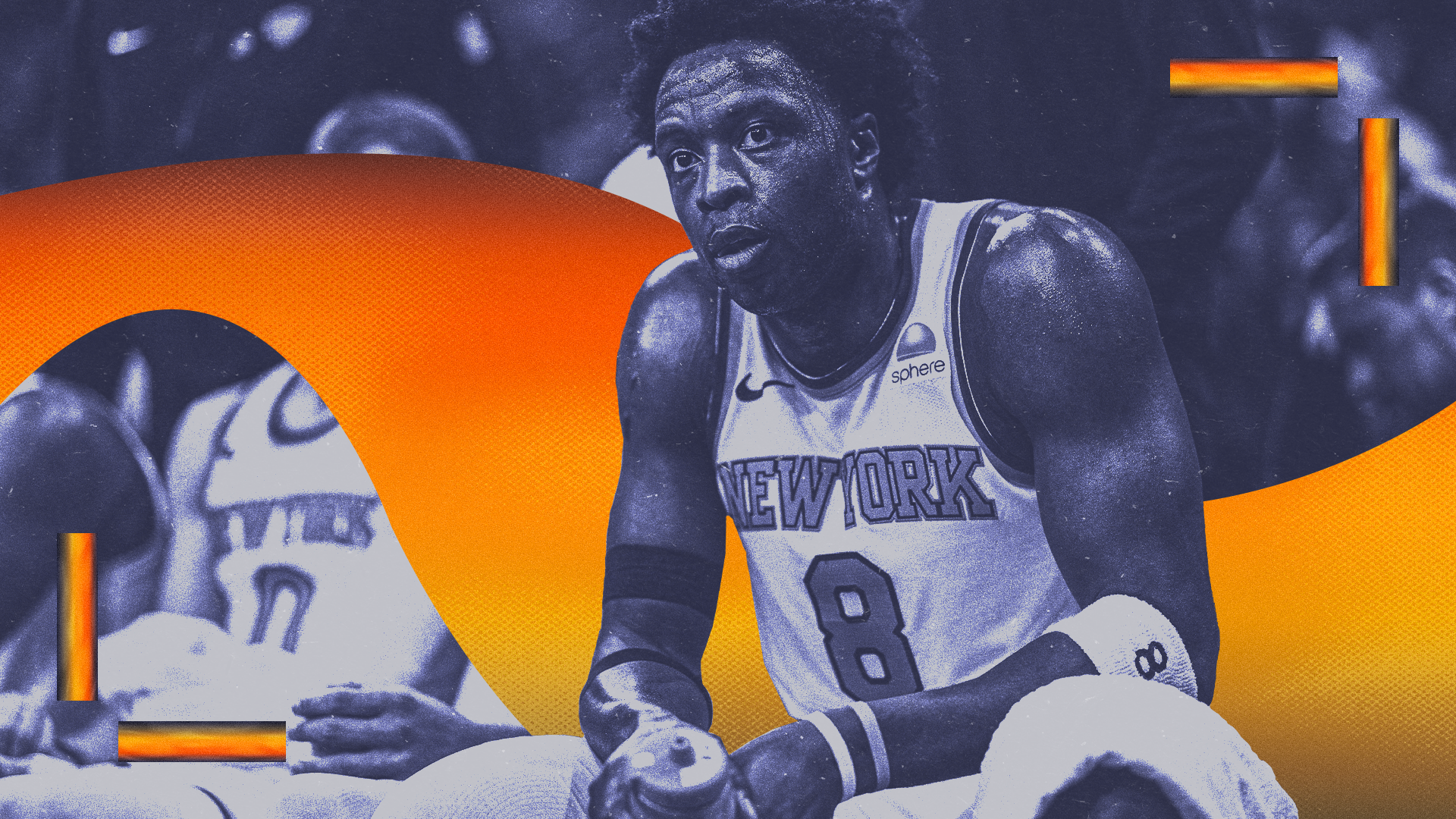NBA blockbuster trades & how the OG Anunoby deal compares
The New York Knicks’ deal for OG Anunoby checks every box for a blockbuster trade — except the recognition
For those of you still holding out for a big, blockbuster move from Leon Rose, I bring news. In exchange for Immanuel Quickley, RJ Barrett and a second-round pick, the New York Knicks landed a ceiling-raiser, a needle-mover, and an overall star in his role: OG Anunoby. But what kind of player makes for a “blockbuster” trade in today’s NBA?
Devin Booker, Donovan Mitchell, Karl-Anthony Towns, Kawhi Leonard and Kevin Durant make up a “should’ve, would’ve, could’ve” quintet Knicks fans lusted after with star-studded eyes. We’ve implored the franchise to swing for the fences. None of them played a game for the Knicks. More likely than not, 80% never will. (The other 20% rhymes with “Monovan Ditchell.”)
Bradley Beal, Damian Lillard, James Harden, Jrue Holiday and Pascal Siakam make up the pool of star players most recently traded, dating back to the summer of 2023. None made their way to New York. Only two are still alive in the 2024 playoffs, whilst Anunoby and the Knicks prepare for the Indiana Pacers.
When you look back through (or thumb through the pages and pages of) the NBA’s blockbuster trade history, a number of consistent themes present themselves. Firstly, the team trading for a star usually includes:
Draft picks of either designation, multiple in quantity
Young talent under team control
Cap relief
An enormous amount of one or the other
Secondly, the team trading the star player is almost certainly:
Bound for immediate mediocrity, whether they keep the player or trade him
Fresh off of a string of disappointing postseason exits after plateauing
Ready to blow it all up because of A, B or both
Thirdly, the player that’s being traded typically:
Is in the final year of a contract
Has some troubled recent history
Is too good for the team’s projected timeline
And lastly, the team that trades for said player is either:
Taking a gamble on a season that promises results just short of a championship
Looking to acquiesce a disgruntled premiere star
Building a super team
Swapping stars, with each side thinking they’re getting the better player
In the six-game series against the Philadelphia 76ers, Anunoby averaged 15 points, 6.8 rebounds, 1.0 steals and 1.3 blocks, posting four consecutive games of 15+ points for only the second time in his Knicks tenure and the first in his postseason career. But that’s not why he ended up in New York in the first place. On the defensive end, where Anunoby has built his reputation, where he toasts his bread and butters it, too, he was a natural coolant for any 76er that challenged his 7-foot-2 wingspan. According to NBA.com’s matchups tracker, when defended by Anunoby:
Joel Embiid shot 7-for-21 and had four shots blocked.
Tyrese Maxey shot 6-for-16 and committed a turnover.
Kelly Oubre Jr. shot 4-for-12 and had two shots blocked.
Anunoby got it done on both ends, playing critical roles in the last two wins in Games 4 and 6. He’s raised a sinking floor and opened the sunroof ceiling for the Knicks. In 883 regular-season possessions with Anunoby on the floor and Randle off, New York outscored opponents by 19.5 points per 100 possessions while holding opponents to 101.8 points per – both ranking in the 99th percentile. He lifted them as a floor-spacer too, hitting 39% of his 104 3-point attempts en route to a 123.8 offensive rating for the Knicks when he took the floor.
But where does he figure into the landscape of blockbuster trades? If there were a graph with planetary-like rings surrounding a spherical center where on-court impact met off-court trade value, I’d argue Anunoby sits firmly in the middle. He left a team bound for mediocrity, as Masai Ujiri and company mutter “2019” over and over, sitting in a corner waiting on Kawhi Leonard to call back. New York traded young players and a draft pick for a player in the final year of his contract that is also too good for his previous team’s current trajectory. Because if you need be reminded, Scottie Barnes is not that guy. It was a weighted gamble on a Knicks’ roster that had lost its best defender just games prior in Mitchell Robinson with a left ankle injury – and an insurance policy that paid out early when Randle was lost for the season with a shoulder injury.
Quoth the ever-charismatic Robert Downey Jr. as Tony Stark at the beginning of the first Iron Man movie: “They say that the best weapon is the one you never have to fire. I respectfully disagree. I prefer the weapon you only have to fire once.” Leon Rose has somehow traveled both avenues in his deal for Anunoby, with assets aplenty to pick from to take another shot at improving his team, but enough success from the first deal to cast some doubt as to whether he needs to. The Anunoby Acquisition™ passes the litmus test for today’s blockbuster trades. So why don’t we recognize it as such?
After seeing Anunoby stop, pop, and block in the blue and orange for a full playoff series, I believe he and the Knicks have pulled off exactly what so many teams set out to accomplish. “Blockbuster” is defined in Oxford’s dictionary as – amongst other things – “a product that is a great commercial success.” New York is 25-4 when Anunoby suits up. They’re favored in a second-straight playoff series for the first time in years, if not a decade. All without their second-best player. OG Anunoby altered the team’s course, its trajectory, and its win probability on any given night. Sounds commercially successful to me. Sounds like a blockbuster addition.


